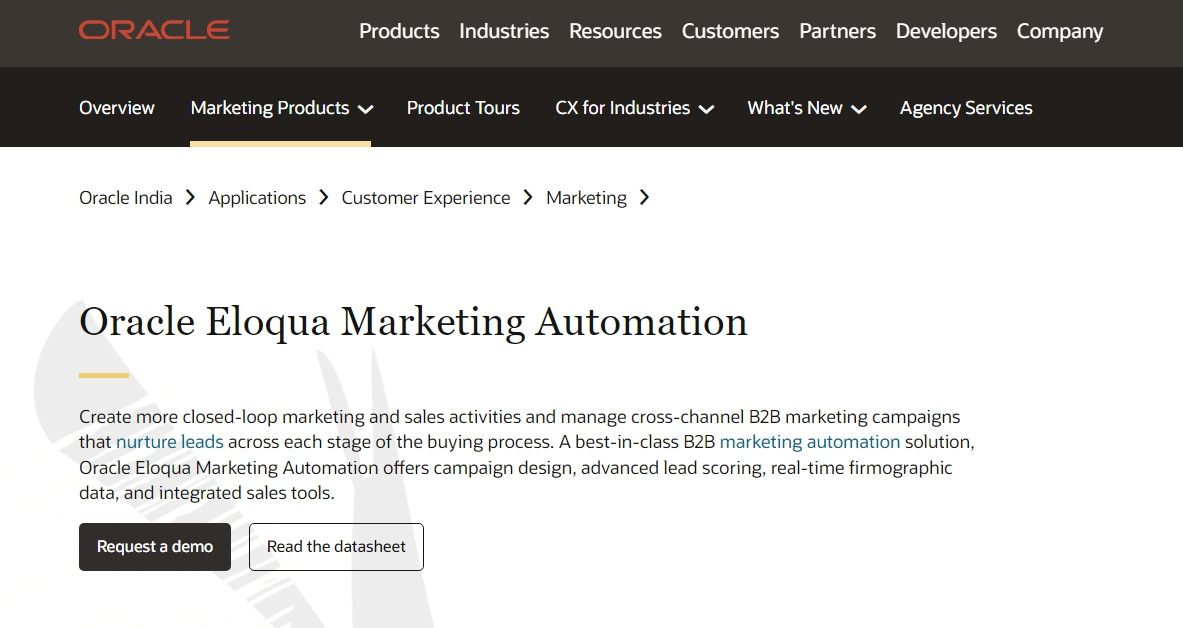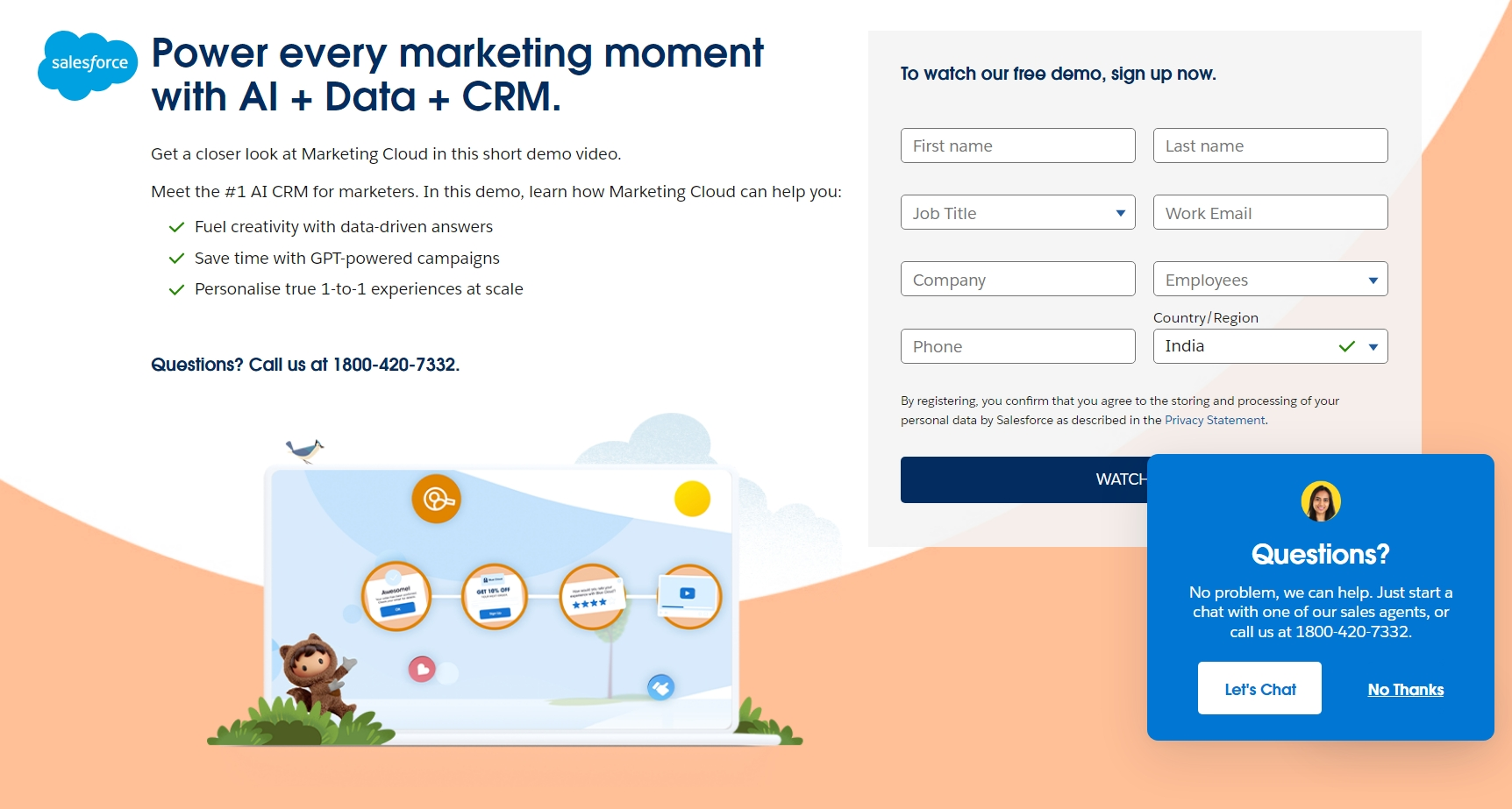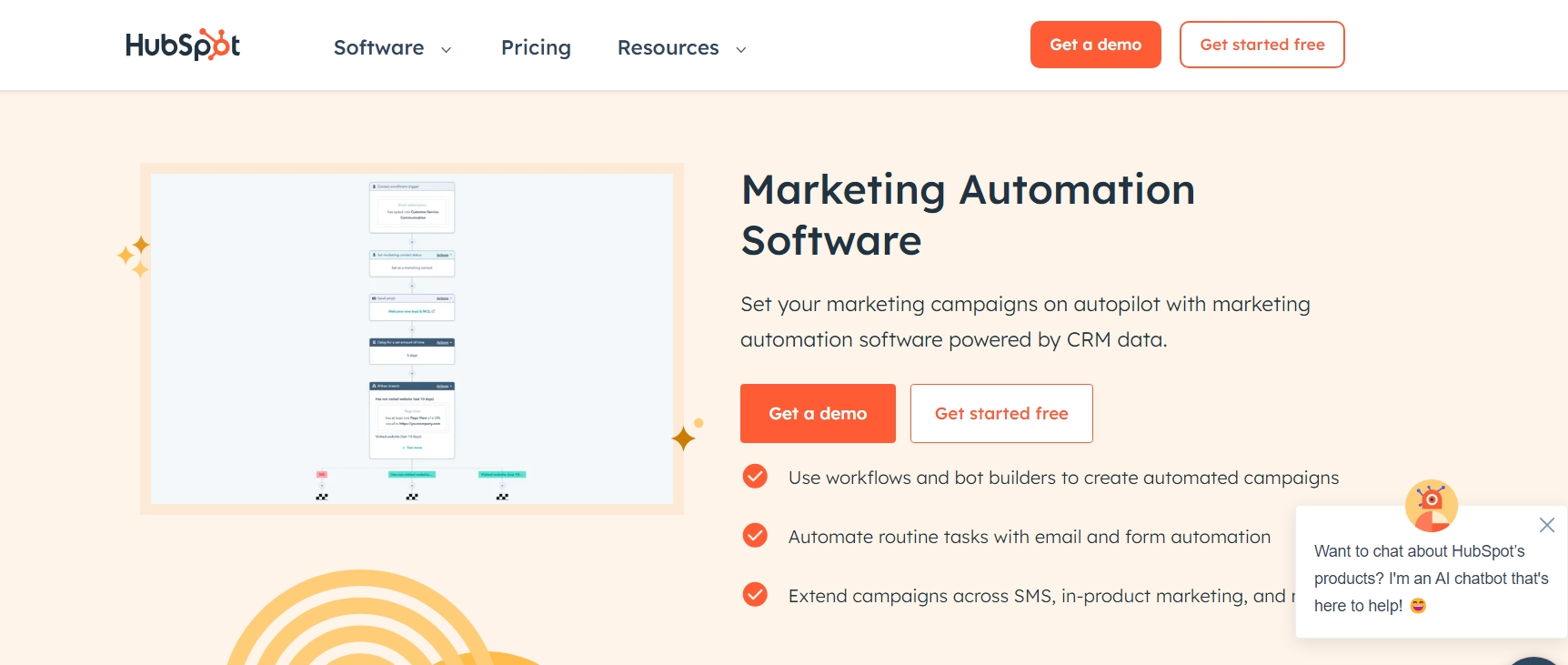Marketing automation is the process of using software to execute marketing activities that are routine in nature such as email marketing, social media posting, and advertising. It is a technology that helps organizations save the time that is taken to complete a particular task, reduce the number of steps that are involved in the process, and thus enhance efficiency.
In enterprise marketing, automation is essential because it assists in the management of large operations. It enables marketing departments to coordinate complex marketing campaigns in multiple channels, interact with customers on a one-to-one basis, and analyze information.
These tasks can be performed in a more efficient manner through the implementation of enterprise automation and the enterprises can focus on strategic planning and creative work which leads to better performance and higher returns on investment.
Marketing automation can lead to productivity gains of up to 20% and sales productivity gains of up to 14.5%. Also, companies that use marketing automation to handle leads receive 451% more qualified leads.
With these tools, enterprises can be assured that their marketing is more efficient, targeted, and effective.
Definition of Enterprise Marketing Automation
EMA or Enterprise Marketing Automation is a multifaceted technological tool that is designed to support the marketing function in large organizations. EMA helps in the management of complex marketing processes like email marketing, social media, customer segmentation, lead nurturing, and data management.
The primary goal is to minimize the amount of work done by hand, increase the efficiency of marketing campaigns, and make them more targeted.
Differences Between Enterprise and Small Business Marketing Automation:
| Aspect | Enterprise Marketing Automation | Small Business Marketing Automation |
| Scale and Complexity | Built to handle big data and big marketing campaigns across multiple channels. EMA’s are designed to meet the needs of large businesses. | Simpler and more affordable, focused on basic automation needs like email marketing and social media scheduling. Easier to implement and manage but may not have the advanced features big businesses need. |
| Customization and Personalization | Has lots of customization options to segment marketing to different customer groups and individual preferences. Includes advanced analytics and AI personalization to boost engagement. | Customization is available but limited compared to enterprise solutions. Small businesses can segment their audience and personalize but the scope and complexity is usually less. |
| Integration Capabilities | Integrates with many other enterprise systems like CRM, ERP and data management platforms to create a unified marketing environment. | Integration is simpler, often limited to popular tools and platforms small businesses use. While effective, these integrations may not meet the needs of larger businesses. |
| Data Management and Security | Has strong data management and security features, meets regulatory requirements to keep sensitive info and data intact. | Focuses on basic data management and security, enough for smaller data sets and less complex regulatory environments but not as robust as enterprise level. |
This way, businesses can select the most appropriate marketing automation solution that fits their size, requirements, and objectives to get the most out of automation in their marketing strategies.
Key Components of Enterprise Marketing Automation
The following are the main components of enterprise marketing automation:
1. Market Segmentation
EMA systems are particularly effective in segmenting customers according to demographic, behavioral, purchasing, and preference characteristics.
This segmentation makes it easier for businesses to market their products and services to the right audience, thus making the messages more effective. With the help of detailed customer information, it is possible to develop highly targeted marketing initiatives that increase the level of interest and sales.
2. Multichannel Campaign Management
EMA tools help marketing departments to organize and control campaigns in e-mail, social networks, and company web-sites. This helps in maintaining a consistent brand image and message across all the channels.
EMA systems also assist in centralizing the management of campaigns, which aids in maintaining consistency and increasing the efficiency of marketing. For instance, a business can introduce a new product into the market and use EMA to coordinate the entire marketing campaign from a single platform, with real-time tracking of performance across various channels.
3. Email Marketing Automation
Email marketing is still an essential part of the enterprise marketing mix. EMA systems enable the scheduling and customization of email marketing campaigns by business organizations.
These tools can then send out emails to the users based on their activity on the site, for example, if they have made a purchase or have been browsing through the site, the communication is likely to be more effective. Some of the examples of automated emails are the welcome emails, product recommendation emails, and promotional emails.
4. Customer Retargeting
Customer retargeting is when you target customers who have shown interest in a product or service but didn’t complete the desired action (buy the product).
EMA systems send follow-up emails or ads to potential customers to complete the sale. It helps businesses recover lost sales and increase conversions.
5. Analytics and Reporting
EMA systems for Analytics and Reporting have features that show campaign, customer and ROI performance. It helps businesses see how they’re doing, and how their strategies are working and make decisions.
By looking at the performance of different marketing campaigns, you can improve outcomes and resource allocation.
6. Data Privacy and Security
Data privacy and security are key in enterprise marketing. EMA systems have security features like access control and encrypted data storage to protect customer data.
Data protection laws like GDPR and CCPA are also followed so businesses don’t violate customer rights and get in trouble. Data protection and security is super tight to protect customer data and the company’s reputation.
Advantages of Enterprise Marketing Automation
1. Efficiency
EMA is great for automating everyday tasks, which is a major advantage of the system. With EMA, you can automate things like sending emails, scheduling social media posts, and updating customer databases.
This automation frees up your marketing team to focus on more important and creative work. It’s a win-win situation – you get more efficient processes and your team can use their time and energy more effectively.
2. Personalization
The best choice delivers the ability to tailor content at an individual customer level is then based on their attributes etc. EMA systems really shine here. These systems take data of customer behavior, preferences and demographics to segment the target audience better and tailor marketing messages which are more attractive for them.
This level of customization helps to improve the interaction and the lead conversion ratio because customers receive only those contents which they want, have some prospects.
3. Scalability
Enterprise Marketing Automation gives ability to organisations handle complex marketing processes. The ability to process huge datasets, across multiple campaigns and media channels in parallel EMA tools are designed for large volumes of data.
Even more importantly for enterprise-level organizations, this makes it possible to reach thousands of people in a short amount of time while delivering the message as intended. EMA systems are flexible and can grow alongside your business, so they can handle increased demands without sacrificing efficiency.
4. Higher ROI
The other advantage of EMA is that it helps to gain the maximum ROI (return on investments) as we can analyze through various data filtering. These systems provide robust data reporting and analysis tools to help companies track the ROI generated by their marketing efforts.
Companies can identify the most effective methods and modify their marketing campaign by examining engagement levels, conversion rates, and ROI. This strategy avoids the waste of resources and allows marketing budgets in a way that makes them more efficient.
These benefits help organizations fine-tune their marketing strategies, better target customers and get more out of their business outcomes available. This monitoring is not just to fine-tune the processes but also to extract intelligence as use data points for yielding marketing campaign efficiency improvements.
Popular Enterprise Marketing Automation Tools
Overview of Top Tools:
1. Oracle Eloqua

Key Features:
- Email Marketing: Powerful email campaigns with precision segments & targeting.
- Lead management, where you can record leads at any stage of their lifecycle and have take-on tools for full lead scoring & nurturing.
- Seamless Integration with Oracle Cloud: It is well designed to blend with some of the other oracle applications that let Marketers and Sales efforts join under a single platform.
- Advanced Analytics: Receive comprehensive campaign reports and analytics to track the performance of your campaigns, measuring ROI in real time.
- No-Code Workflow Builder: Build complex workflows without writing a single line of code.
Benefits:
- Marketing and sales alignment: Connect sales tools to get a single view of customer data so your marketing and sales teams are in sync.
- Scalability: Built for large enterprise projects so perfect for companies with multiple needs.
- Customization: Custom marketing plans and campaigns to fit your business.
2. Salesforce Marketing Cloud

Key Features:
- Email and SMS Marketing: Automate your email and SMS campaigns with content based on customer behaviour.
- Social Media Management: Create, schedule and automate posts and campaigns across all your social media.
- Customer Journey Mapping: Map your customers’ journey and communicate with them automatically.
- Integration with Salesforce CRM: Deep integration with Salesforce CRM for a 360 degree view of customer relationships.
- Deeper insights: Use AI to see how consumer behaviour and campaign performance is changing.
Benefits:
- All in One Marketing Suite: Tools for marketing throughout the digital journey in one place.
- Deeper Customer Engagement: AI and data can deliver a personal experience that’s super engaging to the individual.
- Robust Reporting: In-depth analytics and reporting to see what’s working for your campaigns so you can optimise via data driven decisions.
3. HubSpot

Key Features:
- Email Marketing: Create, personalise and automate email campaigns.
- CRM Integration: Full CRM to manage customer interactions and track sales processes.
- Content Management: Tools to manage website content, landing pages and blogs.
- Lead Management: Capture, track and nurture leads with workflows.
- Analytics and Reporting: Includes a reporting tool to see ROI of your campaigns.
Benefits:
- Easy to Use: Famous for its easy to use and intuitive interface that anyone can use regardless of computer skills.
- All in One: All features work in one place, one user experience.
- Lead Management: Advanced lead capture and nurturing tools to keep them in the pipeline.
So businesses need to know what the key features and benefits are of these top automation tools so they can choose the right one for them and their marketing. Each tool has its own strengths and can make a big impact on your marketing.
Choosing the Right Enterprise Marketing Automation Solution
Choosing the right Enterprise Marketing Automation (EMA) is key to your marketing strategies and business goals. Here are some to consider:
a. Integration
Importance:
Make sure the EMA can connect with your existing systems like CRM, CMS and other marketing tools. This will allow for data to flow and your marketing to work.
What to Look For?
Check for integration compatibility with your existing systems, ease of implementation, and the ability to interface with other systems and applications.
b. User-Friendliness
Importance:
The user interface of the EMA tool needs to be user-friendly so that your team can get to work without much hassle and extensive training.
What to Look For?
Seek simple and intuitive design, clarity of structure, and short learning curves for tools. Besides, it is also worth taking advantage of demo versions or trial periods to test usability before buying.
c. Scalability
Importance:
As your business grows, so will your marketing requirements. Your EMA tool should be able to scale and accommodate more volume of data and support highly sophisticated marketing campaigns.
What to Look For?
The tools that grow with the business have the capacity to handle large data quantities, supporting complicated marketing techniques.
d. Customer Support
Importance:
This is the most critical part of any business, for it helps resolve issues and therefore ensures that all your marketing efforts bear fruit.
What to Look For?
The number of support options available, e.g., email, phone, live chat, the speed at which a response is gotten, and the quality of support offered. Prioritize tools with positive reviews regarding customer support.
Keeping these considerations in mind, you can make an informed decision on an EMA tool that is well integrated into your current systems, will be easy to use, and scales with your business.
Conclusion
Enterprise Marketing Automation would be a tool able to turn on the possibility for large organizations to perfect their marketing process in every way, increase customer satisfaction, and raise the efficiency of conducted marketing campaigns. Knowing the elements of EMA and its advantages, companies will make proper tool choices.
While choosing the EMA tool, integration, usability, flexibility, and support can be of prime importance for making a correct decision. A correct EMA system would not only help in enhancing your marketing approaches but also help boost the business toward great results.




